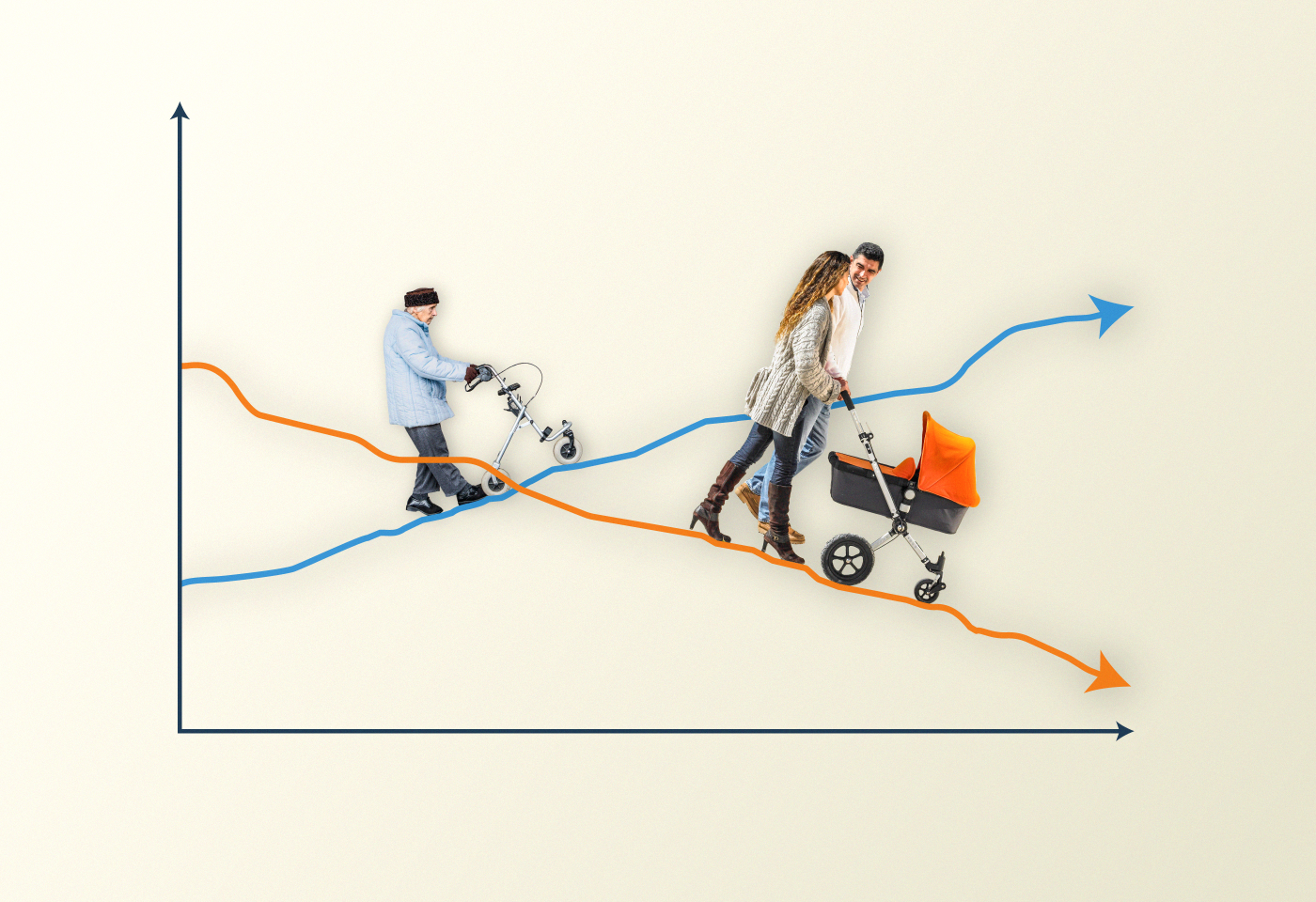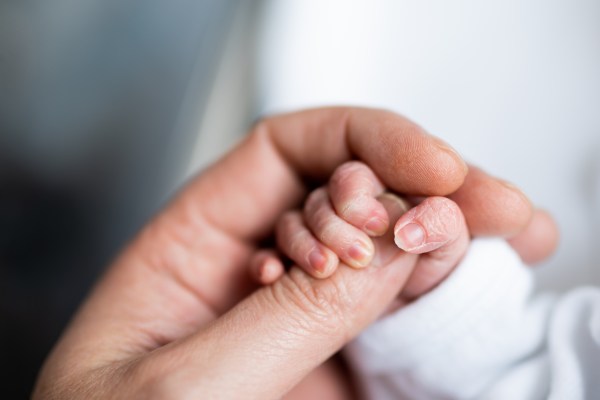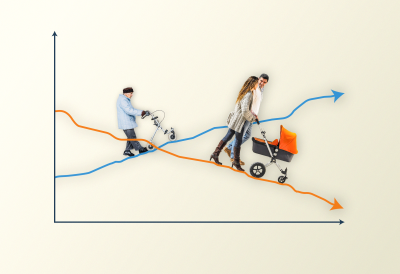In early August, economist Michael A. Clemens published a paper highlighting the consequences of and potential policy responses to South Korea’s birth dearth. Clemens starts with the observation that the country—which has the lowest fertility rate in the world—“faces an unprecedented economic crisis driven by rapid population aging.” He writes that “the once-dynamic Korean economy is widely expected to shrink” as the country’s population ages and the workforce is hallowed out, leading to a steep rise in the number of elderly dependents per worker. I read the paper with interest, looking for lessons for the United States, which has experienced a sustained decrease in births that has brought our national fertility rate to historic lows for our standards.
On the same day I came across Clemens’ study, the New York Times published a piece titled, “Stop Panicking about the Birthrate.”
It was a striking juxtaposition. The Times’ piece suggested that today’s low birth rates largely reflect rising incomes and education levels, as well as women having access to modern contraception. Both of these factors, the article posits, make it easier for women to achieve their desired (low) level of childbearing. And as evidence that low fertility rates likely will not lead to the types of challenges some worry about, the piece offered the observation that “Nordic countries with below-replacement fertility have not devolved into chaos.”
Reading both Clemens’ study and the Times’ piece on the same day, I noticed a pattern that’s come up in recent years, as I have been studying the economics of declining fertility rates. While researchers continue to examine the causes and consequences of fewer births—and sound the alarm about potential negative effects—many writers continue to insist that people just need to calm down. As a June essay in the Washington Post put it, “A lot of women don’t want 2.1 kids.” (Note that 2.1 is the benchmark “replacement fertility rate,” which is the approximate number of children per woman needed for a population to naturally reproduce.)
But these positions need not be at odds—both things can be true. Many women might not want two or more kids (and in fact, my colleagues and I conclude that “shifting priorities” account for the widespread decline in births). That is a perfectly respectable and fine choice for any individual or couple to make. Still, an aging population with fewer children poses serious social and economic challenges that a forward-looking society should take steps to address.
Our task is therefore twofold. On one hand, we need to recognize that any individual’s decision or ability to have a child is highly personal and needs to be handled with tact, and to talk about a falling birth rate in a way that does not threaten or bemoan the advances women have made in society. On the other, rather than dismiss any worries as merely alarmist, we should have a serious conversation about the potential problems of an aging and shrinking population.
The policy challenges of a declining birth rate.
Consider Social Security. The social insurance program is financed by current workers paying for the benefits of current retirees. In turn, its fiscal sustainability depends on having more young people than old people in society. But recent projections by the Social Security Administration assume that U.S. women are going to have 1.9 children over their lifetime. If they instead end up having an average below 1.9 children—arguably a better guess, given recent trends—then the government will either have to cut the amount of Social Security benefits paid out or raise more in taxes than currently projected.
Moreover, an increasingly childless society is one in which an increasingly large number of people will age alone, without adult children to care for them. As a tragic warning of what this might lead to, Japan’s police agency reported that almost 40,000 people died alone in their homes there during the first half of 2024. Nearly 4,000 of those people were discovered more than a month after they died. The United Nations reports that Japan, which in 2022 had a fertility rate of 1.26, currently has the world’s oldest population, reflecting decades of very low birth rates. This is the kind of scenario we should prepare for—and guard against.

In addition, low fertility in the U.S., combined with falling fertility around the world, increases the likelihood of both a less dynamic workforce and fewer productive advances, both of which contribute to improved living standards. Worrying about the impact a shrinking working-age population might have on innovation and economic growth is not a greedy capitalist posture: Economic growth and productivity are good. There is more that can and should be done to promote widespread prosperity, but having fewer workers and a smaller economic pie is not the way to help more people.
Nor is a falling birth rate the solution to our climate crisis. Simply put, the timelines don’t align. Immediate declines in births have only small near-term impacts on the size of the total population—and therefore on cumulative carbon emissions over the next few decades. Reducing the number of babies born is not going to meaningfully change the earth’s temperature any time soon. On the flip side, improvements to the climate crisis are more likely to arise from technological innovations, and it is people who generate ideas that spur innovation that results in more advanced technology. The same is true for medical and other advances that lead to better living standards around the globe. Having fewer young people—and as a consequence, a less dynamic and innovative workforce—is not a promising path toward technological breakthroughs on decarbonization, or the search for a cure for cancer, or any of the other exciting developments that a dynamic workforce might bring about.
Even as some downplay the negative effects of a declining birth rate, all of these factors illustrate that it is of national interest and policy consequence.
Possible worlds.
None of this means that any individual woman is making a mistake by not having more kids, of course. It is understandable that conversations about the birth rate invoke strong sensitivities. Some people are uncomfortable with any suggestion that people’s personal choices about childbearing are somehow problematic for society. I certainly agree that it is nobody’s personal problem to help solve a societal challenge by having a child they might not want to have. Absolutely not.
But rather than insist that we don’t need to worry about a low fertility rate, we should at least consider a few possibilities.
If below-replacement fertility in the U.S. is the result of fully informed adults making choices consistent with them living their best lives, then what, if any, steps should we take to counteract potential negative consequences? If the current low-fertility regime does in fact reflect what people want, then we should accept this as the new reality and change our programs and policies accordingly. Most immediately, we will need to reform our social insurance systems, which were designed decades ago when the ratio of workers to elderly dependents was much higher. We will also need to increase the number of working-age immigrants legally admitted to the U.S. in order to fill jobs—including as elder care providers—and propel economic dynamism. Businesses will need to make capital investments to maintain overall productivity with fewer available workers. And this is just for starters. We need to be thinking broadly about this scenario and the best path forward.

But consider an alternative scenario: If American society were a bit different—or more likely, a lot different—would more people, more women especially, want to have more kids, or have kids at all? There is reason to suspect that the prevailing regime of below-replacement fertility in the U.S. and other high-income countries is at least partially the result of constraints or costs on women that keep some, or even many, from having as many children as they might otherwise like to have. This suggests that if policies were more family friendly, if men were more helpful with household chores, if marital norms were more egalitarian, if social messaging were more celebratory of family life, then people might choose to have more children.
This flips the proposition from the Times’ piece on its head. While the very high rates of fertility among women in the past reflected, to some extent, constraints on women’s autonomy and choices, perhaps the very low rates of fertility among women in the 21st century reflect, to some extent, a different set of constraints. What is the “natural rate” of fertility or childlessness that maximizes human happiness? I don’t think we know.
Pro-natalist, pro-women common ground.
We should at least consider that perhaps human happiness would be even greater if our society were more family and child friendly, if gender roles were more egalitarian, and if more people felt empowered to choose to have children.
Sure, in such a scenario, the improved finances of our social insurance programs and potentially a more productive workforce would be nice bonuses. But even observers who are inclined to set aside such economic considerations should, out of an interest in human happiness and women’s agency, be committed to that line of thinking. Such observers should be open to the possibility that so-called pro-natalist policies might actually lead not just to more babies but to greater overall happiness, including—or perhaps especially—for women.
While the very high rates of fertility among women in the past reflected, to some extent, constraints on women’s autonomy and choices, perhaps the very low rates of fertility among women in the 21st century reflect, to some extent, a different set of constraints.
There should be common ground between pro-natalists and champions of women’s empowerment. Both groups should favor policies and institutions that would make it more financially viable for people to have and raise children, and for more women to pursue both a career and motherhood. For instance, policies like child tax credits, paid parental leave, and child care subsidies would be a way for society to share in the responsibility and cost of raising children. Such policies would make life easier for parents, and they might even alleviate constraints such that some people “on the margin” of having a child or another child might decide to do so.
And we should be honest and recognize that, based on existing evidence, it’s not clear that a package of incremental pro-natalist policies would substantially increase birth rates. But by increasing the disposable income available to parents with children or by making it easier for them to access affordable, high-quality child care, raising children would feel somewhat more affordable and the struggles of combining work with raising children would be somewhat ameliorated. For instance, evidence suggests that increased payments through the Earned Income Tax Credit improve maternal mental health and that paid family leave improves maternal and child well-being.
Yet it is not uncommon for people to react negatively to the idea of any sort of pro-natalist policy agenda. At worst, there is a tendency to describe it as “coercive” toward women or even as a harbinger of some sort of Handmaid’s Tale horror scenario. Such policies are no more coercive than college tuition subsidies that financially nudge people toward attending college by making it more affordable. I don’t think I’ve ever heard someone object to such policies on the grounds of them being “coercive” to people who might not want to get more schooling.
The nature of individual choices, in part, has led us to our present below-replacement fertility paradigm. We should accept it—if it does in fact reflect what women want. But we should also keep the alternative scenario above in mind and consider that our low birth rates might reflect a different set of constraints. Either way, we should not blithely declare that falling birth rates are of no real consequence, or even something to be celebrated. An increasingly aging and childless culture poses problems for individuals, families, and nations. Why would we choose to ignore them?






Please note that we at The Dispatch hold ourselves, our work, and our commenters to a higher standard than other places on the internet. We welcome comments that foster genuine debate or discussion—including comments critical of us or our work—but responses that include ad hominem attacks on fellow Dispatch members or are intended to stoke fear and anger may be moderated.
With your membership, you only have the ability to comment on The Morning Dispatch articles. Consider upgrading to join the conversation everywhere.